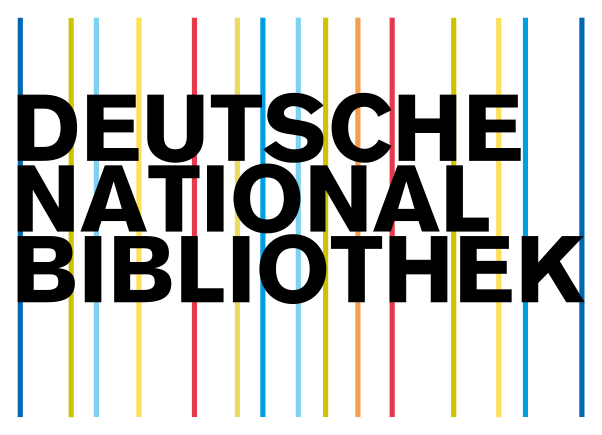Detection of Malware in Cloud Computing using Sparse Autoencoders
DOI:
https://doi.org/10.5281/zenodo.3974574Keywords:
Cloud Computing, Malware Detection, Machine Learning, Behavior based Machine Learning Framework (BMLF), Sparse Autoencoders (SpAEs)Abstract
Cloud computing is a most inclining world view that gives conveyance of physical and intelligent assets as administrations over the Internet on request. Numerous malwares focus at customized personal computers (PCs) in cloud condition to obtain secret data and obstacle the cloud appropriation by organizations and clients. In this paper, we consider a way to deal with shielding the cloud from being assaulted by nearby PCs. Because of this issue, in view of the Windows Application Programming Interface (API) calls are removed from the Portable Executable (PE) files, we propose a novel Behavior-based Machine Learning Framework (BMLF) using Sparse Autoencoder (SpAE) which is worked in cloud stage for detection of malware. In the proposed BMLF, first we develop conduct graphs to give effective data of malware practices utilizing extricated through. We at that point utilize SpAEs for removing elevated level highlights from conduct graphs. The layers of SpAEs are embedded in a steady progression and the last layer is associated with an additional classifier. The design of SpAEs is 5,000-2,000-1000. The experimental results show that the proposed BMLF yields the semantics of more elevated level noxious practices and increments the normal detection accuracy by 2%.
Downloads
References
A. Greenberg, J. Hamilton, D. A. Maltz, and P. Patel, “The cost of a cloud,” ACM SIGCOMM Comput. Commun. Rev., vol. 39, no. 1, pp. 68–73, 2008.
G. K. Shyam and S. Doddi, “Machine vs Non-Machine Learning Approaches to Cloud Security Solutions: A Survey.”, Journal of Engineering Science and Technology Review, vol.12.no.3, pp.51-63, 2019.
A. K. Marnerides, M. R. Watson, N. Shirazi, A. Mauthe, and D. Hutchison, “Malware analysis in cloud computing: Network and system characteristics,” 2013 IEEE Globecom Work. GC Wkshps 2013, no. December, pp. 482–487, 2013.
Symantec, “Internet security threat report,” Netw. Secur., vol. 21, no. 2, pp. 1–3, 2016.
H. S. Galal, Y. B. Mahdy, and M. A. Atiea, “Behavior-based features model for malware detection,” J. Comput. Virol. Hacking Tech., vol. 12, no. 2, pp. 59–67, 2016.
M. Fan et al., “Android malware familial classification and representative sample selection via frequent subgraph analysis,” IEEE Trans. Inf. Forensics Secur., vol. 13, no. 8, pp. 1890–1905, 2018.
Z. Lin, F. Xiao, Y. Sun, Y. Ma, C. C. Xing, and J. Huang, “A secure encryption-based malware detection system,” KSII Trans. Internet Inf. Syst., vol. 12, no. 4, pp. 1799–1818, 2018.
W. Hardy, L. Chen, S. Hou, Y. Ye, and X. Li, “DL4MD: A Deep Learning Framework for Intelligent Malware Detection,” Proc. Int. Conf. Data Min., pp. 61–67, 2016.
O. Ronneberger, P. Fischer, and T. Brox, “U-net: Convolutional networks for biomedical image segmentation,” Lect. Notes Comput. Sci. (including Subser. Lect. Notes Artif. Intell. Lect. Notes Bioinformatics), vol. 9351, pp. 234–241, 2015.
E. Protopapadakis, A. Voulodimos, A. Doulamis, N. Doulamis, D. Dres, and M. Bimpas, “Stacked Autoencoders for Outlier Detection in Over-the-Horizon Radar Signals,” Comput. Intell. Neurosci., vol. 2017, no. i, 2017.
L. Vareka and P. Mautner, “Stacked autoencoders for the P300 component detection,” Front. Neurosci., vol. 11, no. MAY, pp. 1–9, 2017.
O. M. Al-Jarrah, M. Al-Ayoub, and Y. Jararweh, “Hierarchical detection of insider attacks in cloud computing systems,” Int. J. Inf. Comput. Secur., vol. 9, no. 1–2, pp. 85–99, 2017.
S. Browne, W. Golden, and M. Lang, “Association for Information Systems AIS Electronic Library (AISeL) Contextualising the Insider Threat: A Mixed Method Study Recommended Citation Contextualising the Insider Threat: A Mixed Method Study,” vol. 10, 2016.
A. Carlin, M. Hammoudeh, and O. Aldabbas, “Intrusion Detection and Countermeasure of Virtual Cloud Systems - State of the Art and Current Challenges,” Int. J. Adv. Comput. Sci. Appl., vol. 6, no. 6, pp. 1–15, 2015.
J. Jang-Jaccard and S. Nepal, “A survey of emerging threats in cybersecurity,” J. Comput. Syst. Sci., vol. 80, no. 5, pp. 973–993, 2014.
H. S. Pannu, J. Liu, and S. Fu, “AAD: Adaptive anomaly detection system for cloud computing infrastructures,” Proc. IEEE Symp. Reliab. Distrib. Syst., pp. 396–397, 2012.
Y. Han, T. Alpcan, J. Chan, C. Leckie, and B. I. P. Rubinstein, “A Game Theoretical Approach to Defend Against Co-Resident Attacks in Cloud Computing : Preventing Co-Residence Using Semi-Supervised Learning,” vol. 11, no. 3, pp. 556–570, 2016.
S. Akasapu, “An Integrated Approach for detecting DDoS attacks in Cloud Computing,” no. June, pp. 258–261, 2017.
S. Ni, Q. Qian, and R. Zhang, “Malware identification using visualization,” Comput. Secur., vol. 000, pp. 1–15, 2018.
B. Anderson, D. Quist, J. Neil, C. Storlie, and T. Lane, “Graph-based malware detection using dynamic analysis,” pp. 247–248, 2011.
A. K. Marnerides, P. Spachos, P. Chatzimisios, and A. U. Mauthe, “Malware Detection in the Cloud under Ensemble Empirical Mode Decomposition,” pp. 82–88, 2015.
Z. Yuan, Y. Lu, and Y. Xue, “Droiddetector: Android malware characterization and detection using deep learning,” Tsinghua Sci. Technol., vol. 21, no. 1, pp. 114–123, 2016.
J. Yu, C. Hong, Y. Rui, and D. Tao, “Multitask Autoencoder Model for Recovering Human Poses,” IEEE Trans. Ind. Electron., vol. 65, no. 6, pp. 5060–5068, 2018.
K. Zeng, J. Yu, R. Wang, C. Li, and D. Tao, “Coupled deep autoencoder for single image super-resolution,” IEEE Trans. Cybern., vol. 46, no. 10, pp. 1–11, 2015.
C. N. Modi, D. R. Patel, A. Patel, and R. Muttukrishnan, “Bayesian Classifier and Snort based network intrusion detection system in cloud computing,” 2012 3rd Int. Conf. Comput. Commun. Netw. Technol. ICCCNT 2012, no. July, 2012.
Downloads
Published
How to Cite
Issue
Section
URN
License
Copyright (c) 2020 Doddi Srilatha, Gopal Krishna Shyam

This work is licensed under a Creative Commons Attribution 4.0 International License.






